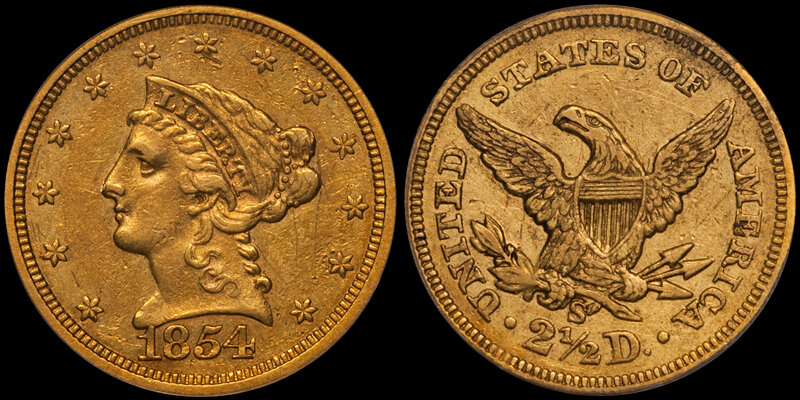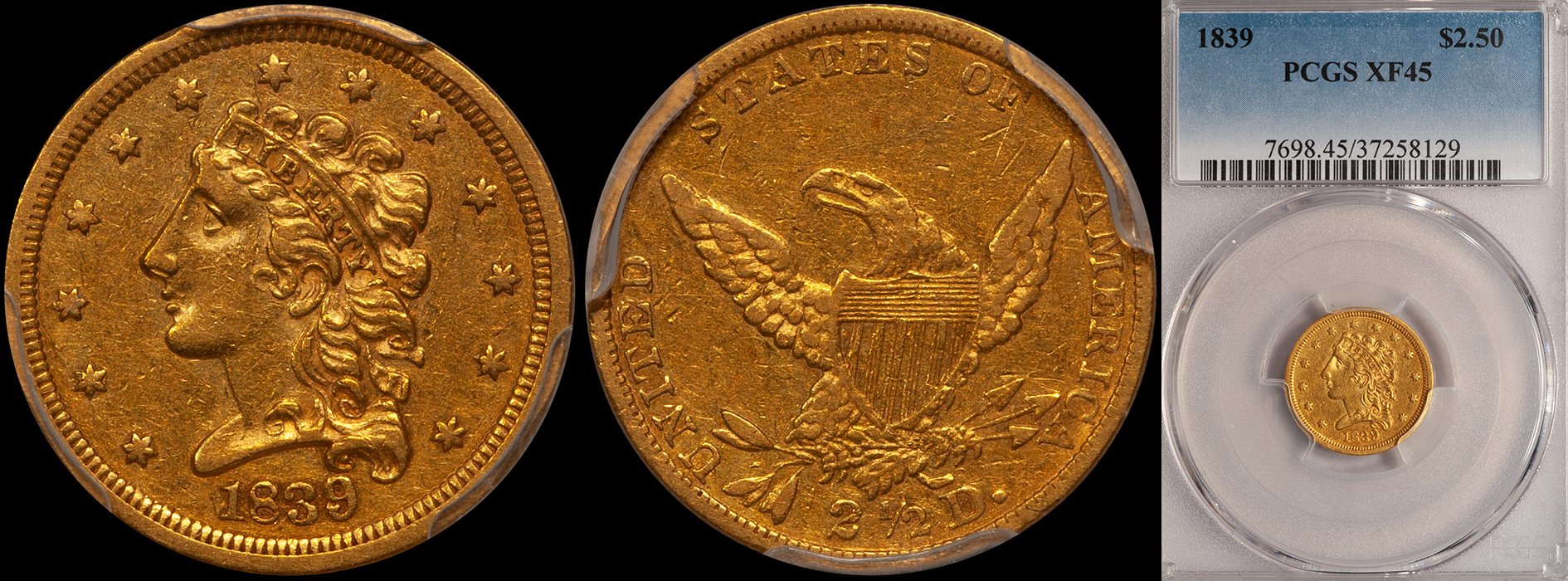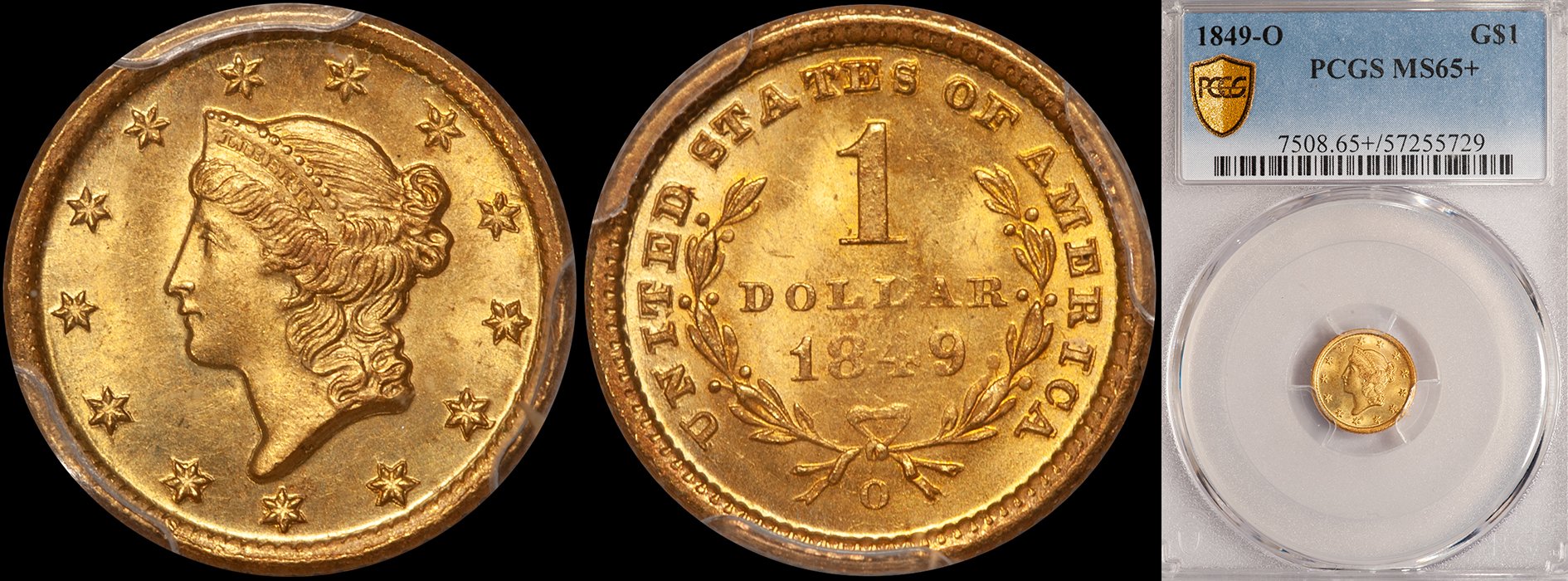The Appearance Rarity of Liberty Head Quarter Eagles: How CAC Populations Help Determine Which Dates Are Rare
/CAC has introduced a number of new shifts in the taste of buyers. A collector who focuses on rare CAC approved coins is, in effect, an appearance rarity buyer. By this, I mean we now have an entire class of collectors who not only search for truly rare issues but search for them with excellent overall eye appeal. CAC rewards coins on their technical merits and, typically, they approve pieces with original color, minimal detracting marks, and a lack of problems.
After more than a decade of viewing coins, the numbers which CAC has approved are now a significant sample size. In the case of Liberty Head quarter eagles, I believe that any issue with fewer than eight pieces approved show true appearance rarity.
If we discount varieties (examples of this would include the 1843-D Large D or the 1859 New Reverse) there are 19 different quarter eagles with CAC populations of lower than eight. Please note that some of the issues listed in this study have had their populations skewed by resubmissions.
Let’s look at these 19 issues and comment on them where appropriate:
0 or 1 approved by CAC: 1841
CAC has approved just a single example of this rarity: a Good 4. I find it a little surprising that at least one of the Impaired Proofs or even the nicer business strikes of this date haven’t been stickered. Part of this is due to the fact that only a handful of CAC-worthy 1841 quarter eagles exist. But I also believe that part of the reason is that a few of the nicer pieces have not yet been sent in.
2 approved by CAC: 1854-S.
I’m actually surprised that two 1854-S quarter eagles (VF35 and EF45) have been approved by CAC. I’m familiar with these specific coins and they are certainly nicer than average for this very rare issue, but I would have guessed that the VF35 wasn’t stickered if I were asked this question point blank.
3 approved by CAC: 1862/1 and 1865
These dates are scarce but they are far from being the rarest dates of this design. I’m very surprised that the 1862/1 has so few approved by CAC as I have seen a few really nice coins in the EF and AU grades. The 1865 is very hard to locate with original color and choice surfaces, but in my experience the 1864 is far rarer, both in terms of overall and high grade rarity. Had I been asked to guess neither would have been in my top ten selections.
4 approved by CAC: 1840-D, 1857-D, and 1867
Of these three issues, I’m not sure I would have selected any as my choice for such a low CAC population. The 1840-D is by far the rarest of this trio and while I have seen very few in higher grades which were CAC quality, I seem to recall a number of VF and EF examples which were better than average. The 1857-D has been a real mystery date ever since I looked up the CAC population a few years ago and was shocked to see that it was—at that time—just two. I’ve been an advocate of the 1867 for years but I’ve never regarded it as the appearance rarity which these CAC numbers suggest.
5 approved by CAC: 1846-C, 1856-C, 1864
1846-C $2.50 NGC AU53 CAC
The 1846-C and the 1856-C are scarce issues but they are not rare. However, they are the two most poorly made quarter eagles from this mint and their mint-made irregularities are not totally understood by CAC. This brings up a semantic issue which I think is worthy of a quick mention. If a reasonably choice/reasonably original coin has dramatic mint-made faults which are endemic to the issue, how should it be apprised by CAC?
The 1864 is a major rarity in all grades and if anything, I’m actually very surprised that there are more examples of this date approved by CAC than there are of the 1865.
6 approved by CAC: 1842, 1852-D, 1866, 1870
The 1842 and the 1866 are two dates whose low CAC populations don’t surprise me. Both are very scarce and both tend not to come very nice. This is especially so for the 1866 which suffers from strike problems. The 1852-D is a slight surprise as it isn’t nearly as rare as the 1854-D through 1856-D trio. I can recall handling some pretty nice 1852-D’s in the EF and lower AU grades, but not more than two or three really nice examples. The 1870 is the real surprise here. It’s a date which is similar to the 1867: with a fairly low mintage and seemingly all but a handful have either been cleaned or were roughly circulated.
7 approved by CAC: 1840, 1843-C Small Date, 1854-D, 1856-D, 1875
This is an interesting mix of dates. I expected the 1854-D and the 1856-D to be included (if anything, I’d have predicted lower CAC approval rates) and am not surprised to see the 1843-C Small Date and the 1875. The 1840 is a real surprise as there was a small hoard of Uncirculated pieces which I recall from the 1990s but it was handled by a notorious coin doctor who likely messed with each and every coin.
Dates which didn’t make the list and which surprised me
There are six dates whose absence from this list were a surprise to me. They are as follows:
1853-D (10 approved by CAC)
1855-D (8 approved by CAC)
1861-S (11 approved by CAC)
1868 (8 approved by CAC but, suspiciously, six are graded AU58)
1881 (8 approved by CAC)
1885 (9 approved by CAC)
There are some interesting conclusions which we can make from the number(s) of Liberty Head quarter eagles approved by CAC.
The first is that would be a very challenging set to build with all CAC coins. It wouldn’t be impossible as there are no dates with zero coins approved, but even if the 1841 and the 1854-S are punted, there are still a dozen which have a total CAC population of six or fewer. This means that if even as few as three or four collectors are working on a CAC set of Liberty Head quarter eagles, the competition for the low population coins would be extremely intense.
The second is that the price premium for these super low population issues is probably not as great as it should be. A nice PCGS/CAC Liberty Head quarter eagle with a population of, say, seven in all grades is worth a significant premium even in collector grades. But how much of a premium should a collector be willing to pay? If a decent but non-CAC PCGS EF45 1857-D is worth, say, $3,000 you wouldn’t hesitate to pay $3,500 for a CAC approved example—but would you pay $4,500 or even $5,000 knowing how small the CAC population is?
The third is that while CAC is clearly viewing Liberty Head quarter eagles with sophisticated eyes, there is still no substitute for a collector becoming highly knowledgeable on his own. There are some very complex issues in this series (the D mints from the 1850s come to mind…) which can be extremely tricky to grade and to determine their degree of quality even CAC might whiff on them.
Do you have an interest in building a set of CAC approved Liberty Head quarter eagles? Why not work with the world’s leading expert on these (and other) US gold coins, Doug Winter. Doug can be reached by phone at (214-675-9897) or by email at dwn@ont.com.
















